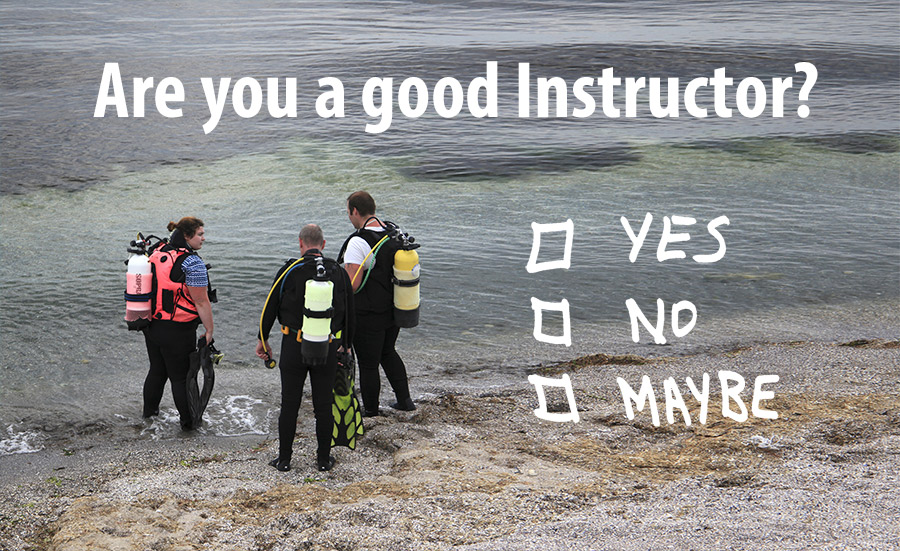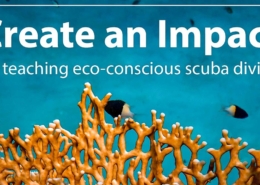Risk Management: Industry Risk
By John Bentley
Risk mitigation is not exclusively tied to following standards and properly completing paperwork. Instructors need to realize the risk they put on the industry by teaching unrealistic courses and creating divers that don’t want to go experience the underwater world. Take your courses to the next level and increase your community of divers by digging deeper in each course to provide top notch training.
Risk comes in two parts for scuba instructors but we tend to only talk about one aspect. The first part is the legal risk of a student getting injured. There are huge ramifications for injuries in diving and a good instructor mitigates that risk through a variety of techniques. The second aspect of risk is industry risk. Industry risk is providing training that causes individuals to not dive after their course. These two types of risk are not mutually exclusive, improperly trained divers lead to injuries, increasing our legal risk potential.
On a December 2015 trip to a popular Florida dive park I saw students surface from dives in tears, get out of the water alone, and tell their friends, “Well, I can’t be a diver”. That’s what these instructors had told their students because it took too many tries to clear a mask or recover a regulator in their first open water session. Then, the instructors continued teaching while these students swam to the docks alone, exited the water, and headed home. This example wasn’t one or two instances but 5, with a number of different dives shops and instructors. These individuals will never dive again because their instructor didn’t have the educational ability to effectively teach. Unfortunately, poor industry risk management, like I saw at the dive park, is relatively common in the world of scuba instruction. Somehow we have twisted this to be a poor reflection on student’s abilities instead of what it should be: a direct reflection of inadequate instructors.
The Experience can Make a Difference
Industry risk should terrify every instructor. You ruin the experience of diving, forever, just by not coming to the course prepared with the tools that you need to effectively teach. Poorly trained divers will never get to descend onto a shipwreck and see a moray eel, have their favorite photos of peppermint shrimp framed above their desk at work, or grow our sport by sharing positive experiences with others.
The allure of training divers is having a student surface from a dive with a grin so big the regulator almost falls out, and experiences so great they can’t help but spew the stories to their friends and family. The emotional wealth we receive from that is unparalleled by traditional job benefits. That isn’t always achieved immediately though. Individuals learn differently and sometimes we have a student that is frightened by a skill or has trouble with keeping composure underwater. That’s okay. That’s what the instructor is getting paid for, adapting teaching techniques and communication styles to better communicate physical mechanics and enjoy the underwater world. No, not everyone has the potential to be a diver but having mask clearing issues, or problems with gear assembly, doesn’t negate a person’s ability to become certified and have fun underwater. With well communicated schedules, expectations, and financials, students and instructors can easily accommodate extra training, even if it incurs more expense for the student.
Confidence is Key
So how do we mitigate industry risk and have divers that love diving? The simple answer is earned confidence. After a course the instructor should be able to ask the students, “Would you feel comfortable now going out and repeating the dives we did in the course, without me there? Could you safely complete those dives, even if serious malfunctions occurred?” If the answer is “no” then the instructor needs to continue the student’s training and not issue a card. The point of a training course is not for the students to learn 40 skills well, it’s for them to learn one skill well: the skill of safely executing dives within the boundaries of their certification while understanding their limits and having a strong ability set.
Risk mitigation is not exclusively tied to following standards and properly completing paperwork. Instructors need to realize the risk they put on the industry by teaching unrealistic courses and creating divers that don’t want to go experience the underwater world. Take your courses to the next level and increase your community of divers by digging deeper in each course to provide top notch training.










Leave a Reply
Want to join the discussion?Feel free to contribute!